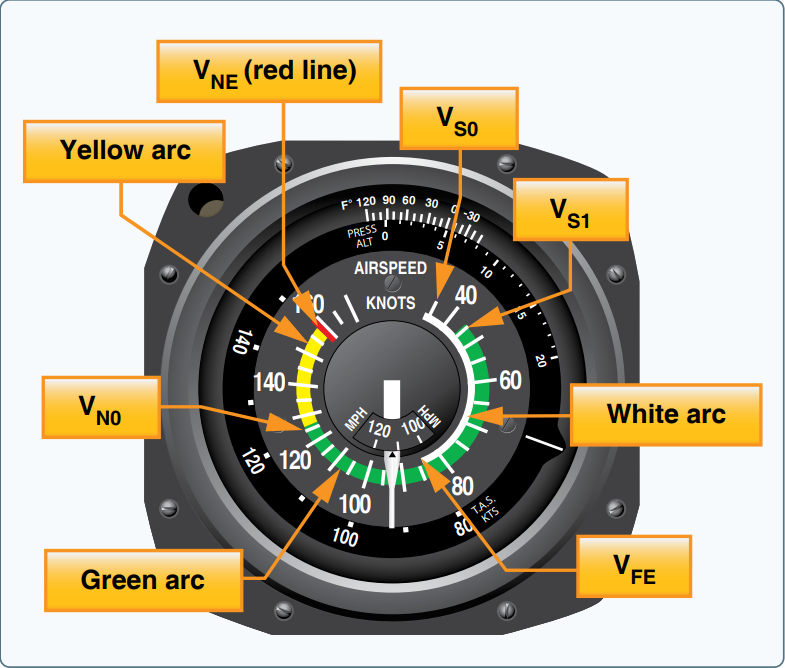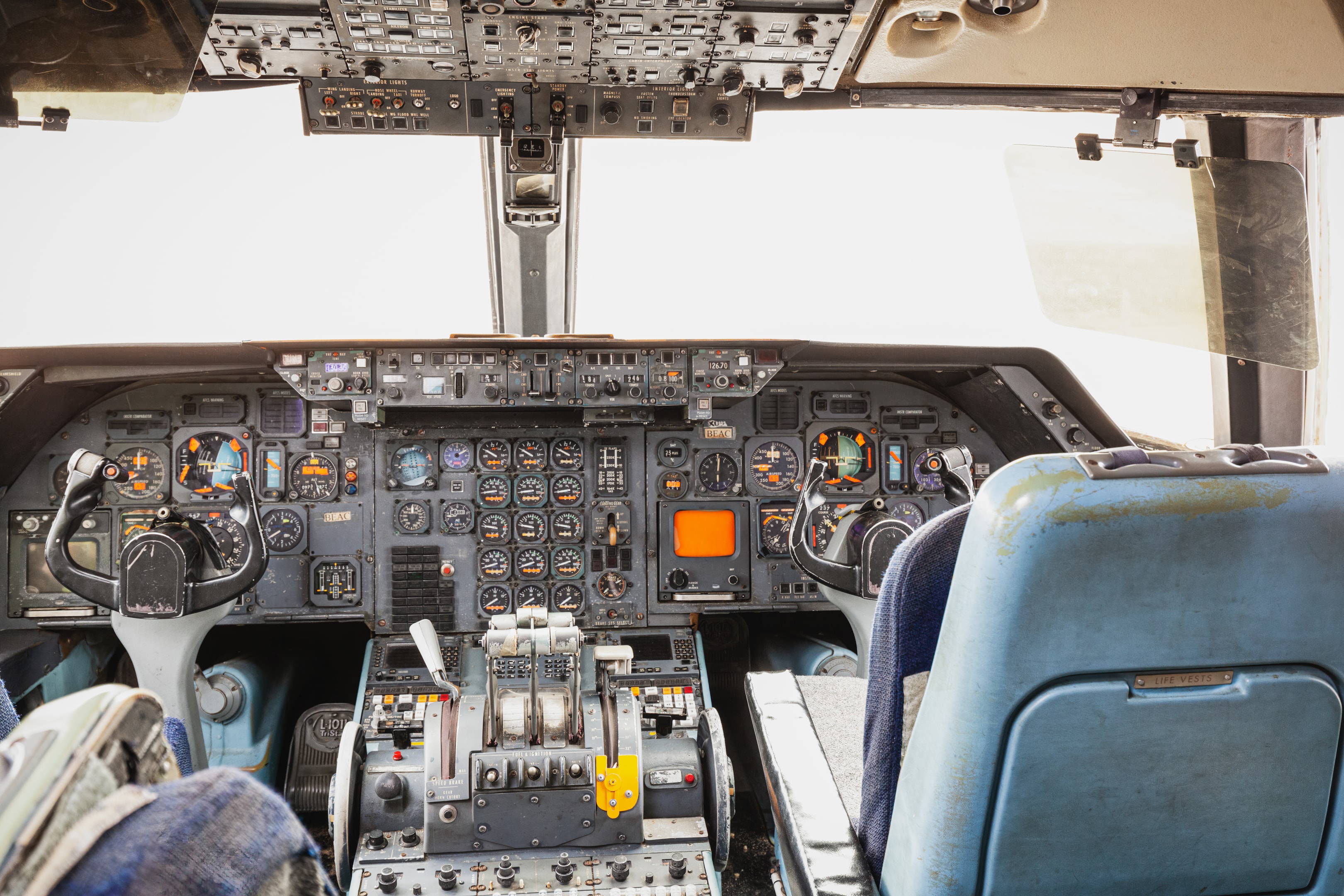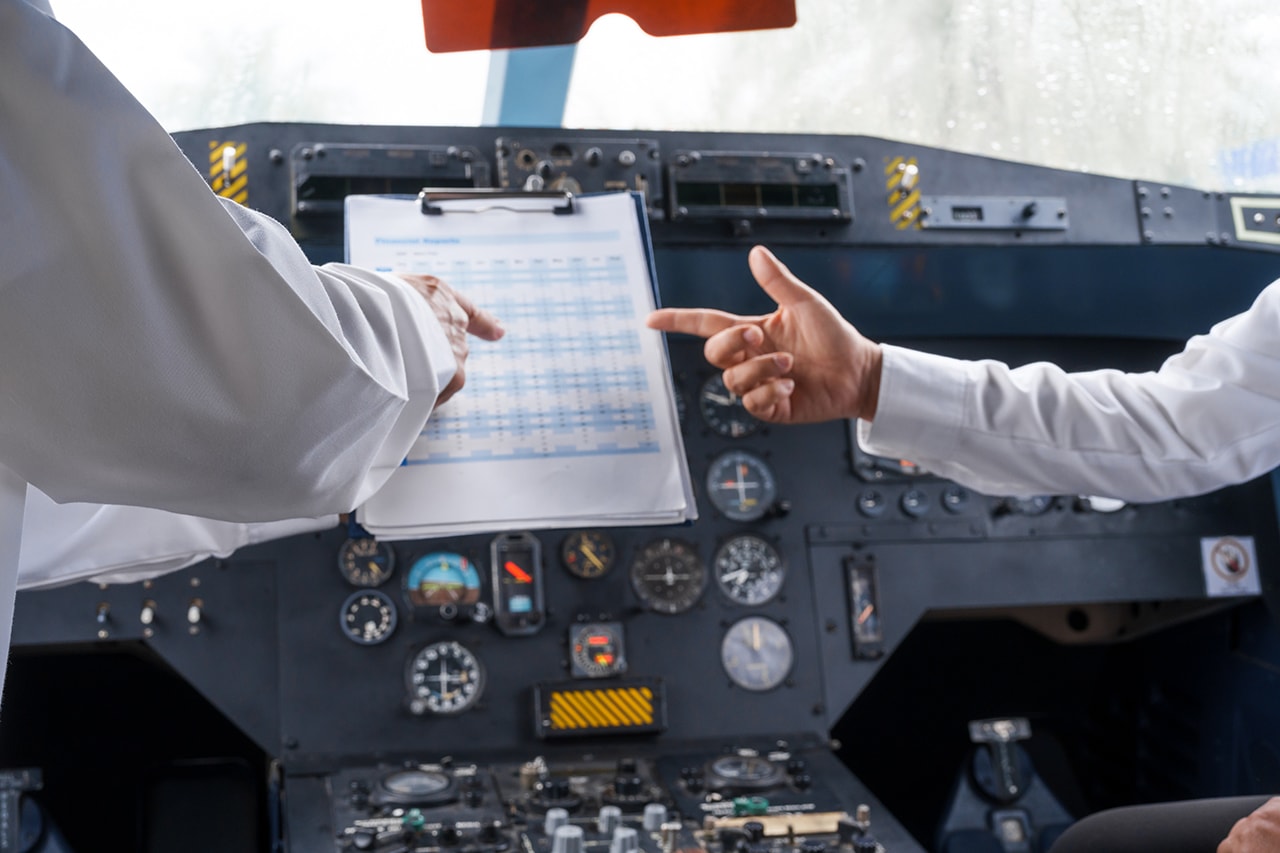How Does an Airspeed Indicator Work? Complete Guide
Oct 22, 2024Understanding Air Pressure and Airspeed Indicators
Understanding air pressure and air speed indicator gives you a better view of the aircraft’s performance. The pitot system plays a crucial role in measuring airspeed through the connection of a pitot tube to various aircraft instruments, such as the airspeed indicator.
The pitot static system is key to this and consists of pitot tubes that capture dynamic air pressure as the aircraft moves through the air.
Static ports measure the ambient air pressure, unaffected by the aircraft’s motion.
With both these pressure readings the system can calculate true airspeed and give you a tool to monitor and adjust flight parameters with precision and accuracy.
The airspeed indicator measures the velocity of an aircraft through changes in air pressure, but it is important to understand the difference between indicated and actual speed, as factors like altitude and air density can affect the readings.
This turns complex atmospheric math into simple data in the cockpit for you to make informed decisions.
The airspeed indicator is not just a measurement tool but a guide, so you can fly at the best speed for the job, especially during critical phases like takeoff and landing.
Knowing and trusting this system lets you fly safe and efficient, that’s what modern aviation is all about.
Components of an Airspeed Indicator
Static Port and Static Pressure
The static port is key to measuring static air pressure which is used by many flight instruments beyond the airspeed indicator like altimeters and vertical speed indicators.
By being located in areas of minimal airflow disturbance the static port ensures the pressure reading is of the true atmospheric conditions and not the turbulence caused by the aircraft moving.
This is the foundation for pilots to have reliable data to fly steady especially during rapid altitude changes or when navigating complex weather.
Plus, the static line to the airspeed indicator allows static pressure to be fed directly into the cockpit instruments.
This is part of a bigger feedback system to give pilots real time information to make informed decisions.
The beauty of this component is its simplicity and reliability, proving that even the smallest parts of an aircraft system can make a big impact on safety and efficiency.
By understanding and appreciating these components aviation enthusiasts and professionals can see how each part of an aircraft works together to keep things smooth and safe.

Pitot Tube and Dynamic Pressure
The pitot tube is a key part of aviation, it captures moving air to measure airspeed. Pitot pressure is the ram air pressure measured by the pitot tube, it’s needed for accurate airspeed readings but can be affected by blockages in the tube which can keep pitot pressure constant and give you incorrect readings.
Its L shape allows it to collect ram air pressure, it’s part of the instrument system of the aircraft. It gives pilots information for safe and efficient flight. It’s reliable and simple. Therefore, it’s critical.
How It Works
The pitot tube collects air pressure as the aircraft moves. It receives the moving air into the hole at the front of the tube and sends it down the pitot line, a special channel that carries that data to the airspeed indicator.
This air then goes to the airspeed indicator, an instrument that converts the air pressure into a speed reading for the pilot. The airspeed indicator uses the difference between static pressures and ram air pressure to determine the actual airspeed of the aircraft.
By giving the pilot accurate speed info, the pitot tube helps the pilot make informed decisions and makes the flight safer and more enjoyable for everyone on board.

Simplified Concept of Measuring Pressure
The pitot tube measures dynamic or ram air pressure, the pressure created by the air moving as the aircraft moves. This pressure allows for airspeed to be measured, a critical element of safe and efficient flight.
By capturing and converting ram air pressure into speed readings the pitot tube allows the pilot to make informed decisions about their flight. Simple and essential its purpose is why it’s so important in aviation.
Importance in Flight
Knowing dynamic air pressure is key for pilots so they can measure their airspeed against the air around them. This is critical for control of the aircraft, safety of passengers and crew and optimal flight performance.
With this info at their disposal pilots can make informed decisions at every stage of flight.
Whether taking off, cruising or landing safely the ability to measure airspeed is essential, so the pitot tube is vital in aviation.
Simplicity and Reliability
The pitot tube’s simplicity shouldn’t be overlooked; it’s a key part of safe flying. Despite its simplicity it provides pilots with consistent and accurate speed readings for optimal control and efficiency.
This simple but essential tool gives pilots access to airspeed data at every stage of their journey. By providing the info the pitot tube lets pilots make informed decisions and safe for everyone on board.
Enhancing Safety
The pitot tube is an essential feature in aviation, as it significantly contributes to aircraft safety by delivering real-time information to pilots. This straightforward yet effective tool allows pilots to consistently monitor the speed of their aircraft, ensuring they make well-informed decisions throughout the flight.
By providing accurate data on airspeed, the pitot tube enhances the safety and efficiency of airplane operations for everyone on board. Its reliable design ensures pilots can maintain proper control during all flight phases, underscoring its vital role in modern aviation.

How Airspeed Indicators Work
Airspeed indicators are key instruments on an aircraft, giving pilots speed info. They work by measuring the difference in air pressure.
The pitot system gets air from two sources: the static port and the pitot tube. These two work together to get the data.
The static port measures the ambient static pressure around the aircraft. This is constant and doesn’t change with the aircraft’s movement.
The pitot tube collects the total pressure of the incoming air, also known as ram air, which changes with speed.
The airspeed indicator then calculates the difference between these pressures. This is what tells the pilot how fast the aircraft is going. The Airspeed Indicator Markings displayed on the instrument provide critical reference points for pilots, indicating various speed limits and performance thresholds.
Remember the pressure change isn’t instant. Pilots need to allow for 6 to 9 seconds.
Airspeed Measurement and Types
The airspeed indicator on an aircraft is the tool for measuring indicated airspeed (IAS). This is the initial reading before any corrections for known errors.
Airspeed can be tricky because of wind, air density and known instrument errors. These are the things pilots need to consider for accuracy.
To navigate this complexity pilots, use 4 types of airspeed, each for a different purpose. Knowing which one to use is key to flying safely and effectively.
The first is Indicated Airspeed (IAS) which is simple but has some errors. It’s the raw data the indicator shows straight up.
Next is Calibrated Airspeed (CAS) which is IAS with corrections made for known errors due to position and instrumentation.
True Airspeed (TAS) is the airspeed adjusted for altitude and non-standard temperature, providing an accurate speed of the aircraft relative to the airmass in which it flies.
Understanding TAS is essential for navigation and flight planning as it affects fuel burn and time calculations.
Ground Speed, in contrast, is the actual speed of the aircraft over the ground, accounting for wind effects. Accurately assessing Ground Speed helps pilots determine real-time progress and estimated time of arrival at the destination.
Overall knowing and using these types of airspeed will help pilots have better control and make informed decisions, fly safely and efficiently.

Importance of Airspeed Indicators in Flight Operations
Airspeed indicators are key to flying. They keep the aircraft within performance limits during all maneuvers.
One of the main jobs of the airspeed indicator is to help you make precise navigation adjustments by providing information on the actual speed of the aircraft. So, the aircraft stays on course throughout the flight.
During climbs, descents and banks airspeed indicators tell you what speed adjustments you need. This helps you fly efficiently and safely.
Lift and not stalling is the key to safe flying. Airspeed indicators help the aircraft to get the lift it needs and avoid stalling situations.
The stall speed of a plane can vary depending on the size and dimensions of the plane and the weather conditions. So, understanding airspeed is key to recognizing and preventing stalls.
However, it's essential to be aware of Airspeed Indicator Errors that can affect the accuracy of these readings. Inaccurate data can arise from various factors, including instrument errors, which may occur due to improper static line installation or obstructions.
In short airspeed indicators are a pilot’s best tool to control, fly efficiently and practice safe flying. They are the foundation of flying. Common Errors and Limitations of Airspeed Indicators
Airspeed indicators give you useful information but not without its known errors and limitations.
Pitot tube blockages can give you false static pressure readings. Instrument errors can occur due to wrong static line installation or blockages. Pre-flight checks should ensure the pitot tube array and static line are blockage free.
Common Errors and Limitations of Airspeed Indicators
Airspeed indicators are critical instruments in aviation, providing pilots with essential information for safe navigation and maneuvering. However, like any instrument, airspeed indicators are not immune to errors and limitations. Understanding these common errors and limitations is crucial for pilots to ensure safe and efficient flight.
Airspeed Indicator Maintenance and Troubleshooting
Airspeed indicators need to be maintained regularly to work properly and give accurate readings. This is to prevent potential failures that can affect flight safety.
Troubleshooting airspeed indicators should always be done by experienced mechanics or technicians. They know how to diagnose the problem and make sure any fix is to aviation standards.
One of the key points during maintenance is to check the pitot tube and static ports. These need to be checked for blockages or damage, as problems here can give inaccurate airspeed readings. Blockages can maintain constant pitot pressure, leading to incorrect airspeed readings, which highlights the critical importance of pre-flight checks.
And the airspeed indicator itself needs to be calibrated. This will ensure the instrument is measuring the aircraft’s speed correctly. And certified. Certified means it has gone through strict certification process to meet all safety and performance requirements.

Airspeed Indicator Calibration and Certification
Airspeed indicators need to be calibrated and certified regularly to be accurate. So, you can trust the readings during flight for overall safety.
Calibration of airspeed indicator should be done by skilled mechanics or technicians. They know what they’re doing so the instrument will give you precise readings.
Certification of airspeed indicator is not just a paperwork. It has to be brought up to the specifications of a regulatory body, so the equipment meets all the standards.
The process should be well documented. That’s your proof that the airspeed indicator is airworthy.
In short, regular maintenance, calibration and certification of airspeed indicators is for flight safety and efficiency. It’s a team effort to make aviation run smoothly and safe.
Airspeed Indicator Installation and Integration
Airspeed indicator installation is crucial to aircraft functionality. It needs to be integrated into the pitot static system which is the backbone of airspeed measurement.
Qualified people like mechanics or technicians are required for this installation. Their expertise ensures accuracy and reliability in the installation of the airspeed indicator.
It must be connected to both pitot tube and static ports. These connections are critical for airspeed measurement so pilots can get accurate data during flight.
After installation, test thoroughly. This will test the airspeed indicator, and all components are working as expected.
Then certify to aviation standards. Certification is key to safety and compliance so pilots and passengers can have confidence in the aircraft.

Airspeed Indicator Safety Considerations
The airspeed indicator is key to flight safety. As an instrument it helps you monitor and control the speed of the aircraft which is vital for safe flying.
But you must be aware of the airspeed indicator’s limitations and errors. Knowing these will help you interpret the information correctly and avoid situations that can be dangerous.
Don’t rely on the airspeed indicator alone. Use it with other instruments like the altimeter and vertical speed indicator to get a full picture of the aircraft and the environment.
One of the main uses of the airspeed indicator is to prevent stalling. By watching the speed numbers, you can maintain the lift and keep the aircraft airborne and safe for the whole flight.
In short, the airspeed indicator is a great tool, but it works best with other instruments, and you need to know its limitations. Pilots’ awareness and skill makes the difference in using this instrument for safe flying.
Airspeed Indicator Regulations and Standards
The airspeed indicator is a critical instrument that has to meet strict regulations and standards. These regulations ensure the indicators work accurately and reliably and are part of flight safety.
Certification by a regulatory body is required for all airspeed indicators. This certification means the instruments meet pre-defined safety and performance requirements which are essential for safe flying.
Meeting industry standards is another key aspect for airspeed indicators. These standards usually cover quality and precision guidelines to ensure airspeed measurement consistency across different aircraft.
Also, the installation and maintenance of airspeed indicators must comply with regulations. Installation is to ensure accuracy of readings and maintenance is to keep the instrument working overtime.
In short, following these regulations and standards allows pilots and aviation professionals to use airspeed indicators with confidence and safer for everyone.
Airspeed Indicator Technology and Innovation
In the last few years technology has improved the accuracy and reliability of airspeed indicators. This means safer navigation and more efficient flying.
Modern airspeed indicators have digital technology and new materials. This means more accurate readings and more durable instruments that can withstand all kinds of flying.
The airspeed indicator is essential in today’s aviation. Pilots use it to monitor vital flight info so it’s crucial for safe speeds and control of the aircraft.
Research and development will continue to drive airspeed indicator innovation. This is all about more functionality, more accuracy and better user experience for the aviation industry.
In short, airspeed indicators will mean safer and more precise flying for everyone.
Airspeed Indicator Training and Education
Airspeed indicator training is key to safer flying. It gives you the knowledge and skills to use this important instrument. Understanding the principles of airspeed measurement is fundamental to flying the aircraft well.
Knowing the limitations of the airspeed indicator is just as important as knowing how to use it. This part of training helps you anticipate and manage the limitations you’ll encounter on the flight and make better decisions.
Practical exercises and simulations are part of the training. These hands-on experiences allow you to practice and refine your skills in a safe environment so you can be more confident and competent in the real world.
Qualified instructors are key to this training. Their experience and guidance mean you get high quality training tailored to your specific flying requirements.
In the end airspeed indicator training and education is about developing understanding and proficiency which is critical to safety and efficiency in aviation.

Conclusion: How Does an Airspeed Indicator Work?
Understanding how an airspeed indicator works is key to understanding aircraft performance. This vital instrument uses the pitot-static system, which cleverly uses the difference in air pressure from the pitot tubes and static ports.
The dynamic pressure from the pitot tube and the ambient pressure from the static port work together to calculate the true airspeed and converts complex atmospheric data into cockpit information. While the airspeed indicator gives you speed, remember to take into account altitude and air density to get accurate readings.
So, pilots can monitor and adjust flight parameters accurately, airspeed indicators are safety critical during takeoff and landing and show how important they are.
